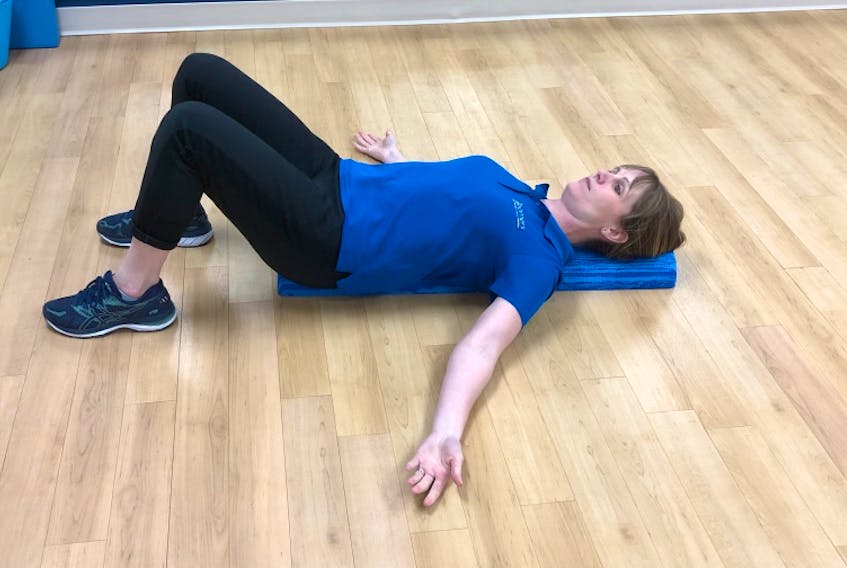Gravity, computer work, driving and other sedentary behaviours have a sneaky way of catching up with us.
They can cause us to assume a forward slouched posture with effects that can be seen and felt in many areas of the body, including the neck, shoulders and upper back.
When in a forward slouch, the neck is forced to extend forward at an awkward angle and the shoulders lose mobility. This can result in uncomfortable fatigue in the neck and back muscles, shoulder pain with reaching and rotator cuff pathology in the shoulder.
Correcting a postural fault involves three different areas of focus: body position awareness, strengthening and stretching exercises.
Body position awareness is a key factor in correcting posture. One of the tools I use in the clinic is to take a picture of someone from the side. It is an easy way to assess the plumb line of your posture; ideally, a straight line runs from the centre of your earlobe through the centre of your shoulder and hip.
Until you have a sense of what your resting position is, it is hard to make adjustments to a more ideal posture.
Strengthening focuses on the muscles in your middle back. Rotator cuff strengthening can also be helpful to keep the shoulder joint well positioned. If you are interested in learning some of these exercises, it is best to consult with a physiotherapist to learn correct techniques and choose the best exercises for your body.
If there is persistent tightness in the muscles at the front of your chest, efforts to change your posture will likely be unsuccessful. Two primary muscles that pull you into a poor postural position are pectoralis minor and major.
In my experience, there is one stretch that works well and is possible for almost everyone to do. It is called a low-load, prolonged stretch and involves lying on your back with your knees bent and arms resting out to your sides in a palms up position, if possible. A slight pulling should be felt through your chest muscles, but no pain in your neck or shoulders. The amount of stretch can be increased by extending your arms further out to the side/overhead. You may feel most comfortable with a pillow under your head and neck.
If you do not feel stretch when lying flat on a mat, the position can also be increased by lying along the length of a towel roll or foam roller. There should not be any pain in this position and it can be held for five to 10 minutes.
Generally, this is a very comfortable position. However, if you have any concerns, do not try this stretch without medical consultation.
Posture is a factor in many of the injuries I see on a regular basis. If you know your posture could be better, don’t wait for it to become a problem. Consult a physiotherapist regarding the options that are best for you.
Laura Lundquist is a physiotherapist whose passion for healthy active aging prompted her to open Zoomers Physiotherapy and Health Solutions in Halifax. More information about Zoomers' healthcare and fitness services can be found at www.zoomershealth.ca or by calling 902-453-1525.









